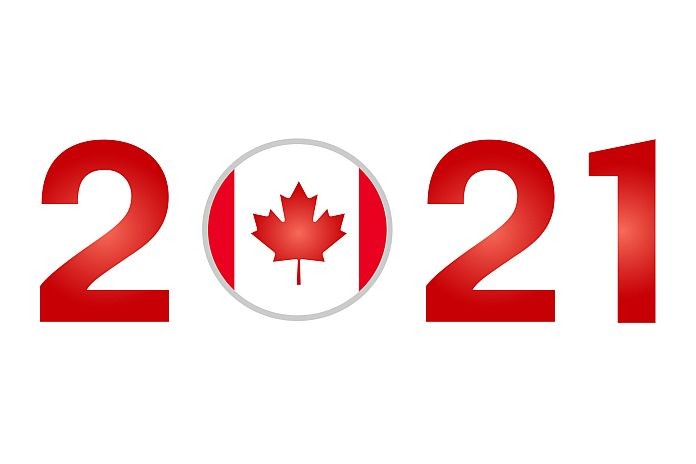By Kareem El-Assal
MONTREAL, Canada (CIC NEWS) – The onset of the coronavirus pandemic changed the course of Canada’s immigration system in 2020 and while things have stabilized, the pandemic caused IRCC to make major adjustments in 2021.
Immigration, Refugees and Citizenship Canada (IRCC) entered 2021 facing difficult circumstances. Immigration application backlogs were growing, many newcomers such as Confirmation of Permanent Residence (COPR) holders waited in limbo overseas, COVID case levels were high at home and around the world, vaccination rates remained low, travel restrictions and Canada’s public health measures posed difficulties for newcomers looking to enter the country, and despite all this, the federal government mandated IRCC with landing 401,000 new permanent residents this year.
IRCC decided early in the year the best way to achieve this goal was to transition as many temporary residents living in Canada to permanent residence. The warning signs of this policy shift at the beginning of the year were obvious in hindsight, but still left stakeholders guessing in the absence of official IRCC policy statements. Whereas IRCC was issuing Express Entry invitations to all candidates to close 2020, it started 2021 by focusing invitations on Canadian Experience Class (CEC) candidates, since some 90 per cent of them live in Canada.
IRCC’s strategy on how it sought to achieve its 401,000 newcomer target became even more apparent on February 13, 2021. On that Saturday, IRCC held the most exceptional draw since Express Entry was launched in 2015. It invited all of the 27,332 Express Entry candidates in the pool to apply for permanent residence and felt compelled to release a statement explaining the decision. The statement also noted IRCC looked forward to welcoming more people from abroad when the COVID situation improved.
In May, IRCC went to even greater lengths to ensure it could hit its 401,000 newcomer target when it launched six temporary streams enabling up to 90,000 essential workers and international graduates in Canada to apply for permanent residence.
By June, IRCC had ramped up its processing capacity and was landing 35,000 permanent residents per month (mostly from within Canada) and in recent months, has surpassed 45,000 monthly landings.
Last week, the department proudly announced it broke Canada’s record for permanent resident landings in a calendar year. While the strategy to focus on in-Canada landings has enabled IRCC to achieve its levels goal and also enabled hundreds of thousands to achieve their goal of becoming permanent residents, it has also come at a cost.
IRCC’s backlog has grown to 1.8 million applications, which it admits is in part to the strategy to prioritize in-Canada applicants. Many COPR holders, and applicants for permanent residence, study, work, and visitor visas are waiting longer than usual for IRCC to process their papers. Federal Skilled Worker Program (FSWP) candidates, who were the main group of Express Entry immigrants prior to the pandemic, continue to wait patiently for their names to be drawn from the pool. Moreover, the in-Canada strategy has seen Canada’s population and labour force growth slow which has contributed to some of the highest job vacancy levels in Canadian history.
IRCC remains constrained by many circumstances out of its control, such as COVID case counts and government lockdown measures in Canada and abroad, as well as the Canadian government’s travel policies. For instance, the Canadian government’s decision earlier this year to ban flight arrivals from India (a ban which has since been lifted), by far Canada’s leading source country of newcomers, posed a major obstacle for IRCC.
Despite ongoing challenges, IRCC has worked to keep the immigration system functioning. In January, for example, it announced a policy allowing Post-Graduation Work Permit (PGWP) holders to apply for a one-time extension to get an open work permit. The purpose was to give those in Canada more time to get the work experience they need to be eligible to apply for permanent residence. In the autumn, as another example, it invited 30,000 sponsors to submit Parents and Grandparents Program applications.
Such policies are, of course, shaped by the elected government of the day. In September, the Liberal Party of Canada was re-elected to a third consecutive mandate. Since assuming power in 2015, they have overseen significant increases in Canada’s immigration levels from some 260,000 new permanent residents then to over 400,000 today.
Following the election, prime minister Justin Trudeau appointed Sean Fraser, a lawyer from Nova Scotia, as the new immigration minister.
Earlier this month, Trudeau assigned Fraser with a new immigration mandate letter. Among Fraser’s marching orders include continuing to oversee higher immigration levels, improving application processing times, resettling 40,000 Afghan refugees, and bringing families together more quickly.
This year is ending in a similar fashion to how it started. COVID levels are surging in Canada and globally resulting in increased uncertainty. Nevertheless, the Canadian government continues to view immigration as an important means of supporting Canada’s economic and social recovery.
Although the pandemic will continue to pose challenges for IRCC and newcomers alike, Canada’s overarching immigration policy goals remain unaffected by the pandemic which means the arrival of permanent residents, temporary foreign workers, international students, and visitors should eventually return to normal and will likely exceed pre-pandemic levels once the worst of the crisis is behind us.
This article written by Kareem El-Assal originally appeared on CIC NEWS on December 29, 2021.





